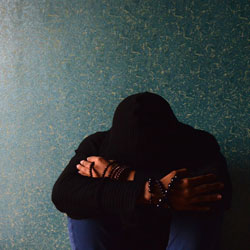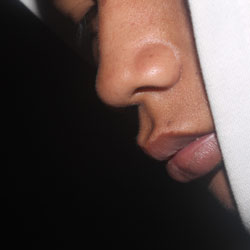What are anxiety disorders? Are they common?
Everybody knows what it's like to feel anxious - the butterflies in your stomach before a first date, the tension you feel when your boss is angry, the way your heart pounds if you're in danger. Anxiety isn't always a bad thing. It can help you cope with life's everyday stress. It makes you study harder for that exam, keeps you on your toes when you're making a speech, and helps you stay focused when looking for a job or asking for a raise.
But if you have an anxiety disorder, this normally helpful emotion can do just the opposite. It can keep you from coping and can disrupt your daily life. Anxiety disorders aren't just a case of "nerves." They are serious illnesses that can grow worse when not treated. They are thought to be related to the biological makeup and life experiences of a person, and often run in families. Every year, more than 19 million American adults suffer from anxiety disorders. There are treatments for these disorders that can help people lead full and healthy lives. And, research is being done to find new ways to help people with anxiety disorders.
What are the different types of anxiety disorders and what are their symptoms?
There are five types of anxiety disorders, each with different symptoms. They include:
- Generalized anxiety disorder (GAD) - constant and exaggerated (more than normal) worry and tension about everyday life events and decisions that lasts for at least six months. A person fears the worst, even though there may be little reason to expect so. Physical symptoms can also happen, such as fatigue, trembling, muscle tension, headache, or nausea.
- Obsessive-compulsive disorder (OCD) - repeated, unwanted thoughts (obsessions) or ritual behaviors (compulsions) that a person feels they can't control or stop. A person can sometimes feel an urgent need to perform a ritual behavior, such as always washing hands three times because three is a "good luck" number and one isn't.
- Panic disorder - feelings of extreme fear and dread that strike with no warning and for no reason. These feelings can happen over and over again. A person can have physical symptoms, such as chest pain, heart palpitations (heart beating fast or skipping beats), shortness of breath, dizziness, stomach problems, feeling disoriented or not "real," and have a fear of dying.
- Phobias - includes social phobia, an extreme fear of being embarrassed, judged, or made fun of in social or work situations and specific phobia, an extreme fear of an object or situation that poses little or no danger. People with phobias often avoid certain situations (like public speaking or parties) or objects (like elevators). Phobias can affect a person's career, relationships, and daily life activities.
- Post-traumatic stress disorder (PTSD) - involves how a person reacts to a very frightening or stressful event, such as being tortured or put in a prison camp during a war, seeing another person being hurt or killed, or raped. With PTSD, a person can keep re-living the event with nightmares and flashbacks. They can feel numb, depressed, angry, irritable, and jumpy. Family members of victims can also develop PTSD.
How are anxiety disorders treated?
Anxiety disorders are among the most common of all the mental disorders. Many people misunderstand these disorders and think people should be able to overcome the symptoms by sheer willpower. But, the symptoms can't be willed or wished away. There are treatments, developed through research, that work well for these disorders.
Anxiety disorders are treated in two ways - with medication and with certain types of psychotherapy (sometimes called "talk therapy"). Sometimes only one treatment is used or both treatments are combined. If you have an anxiety disorder, talk with your doctor about what will work best for you.
A number of drugs used for treating depression, called antidepressants, have been found to help with anxiety disorders as well. Monoamine oxidase inhibitors (MAOIs) are used, along with the newer selective serotonin reuptake inhibitors (SSRIs). Other medicines include anti-anxiety drugs called benzodiazepines and beta-blockers.
Treatment with psychotherapy includes cognitive-behavioral therapy (CBT) and behavioral therapy. In CBT, the goal is to change how a person thinks about, and then reacts to, a situation that makes them anxious or fearful. In behavioral therapy, the focus is on changing how a person reacts to a situation. CBT or behavioral therapy most often lasts for 12 weeks. It can be group or individual therapy. Some studies have shown that the benefits of CBT or behavioral therapy last longer than do those of medications for people with panic disorder, OCD, PTSD, and social phobia.
Keep in mind that it can be a challenge to find the right treatment for an anxiety disorder. But, if one treatment doesn't work, the odds are good that another one will. Your doctor and therapist will work together to help you find the best approach. New treatments are being developed through ongoing research. So, don't give up hope. If you have recovered from an anxiety disorder and it comes back at a later date, don't think that you've failed. You can be treated again. And, the skills you learned dealing with the disorder the first time can help you in coping with it again.



